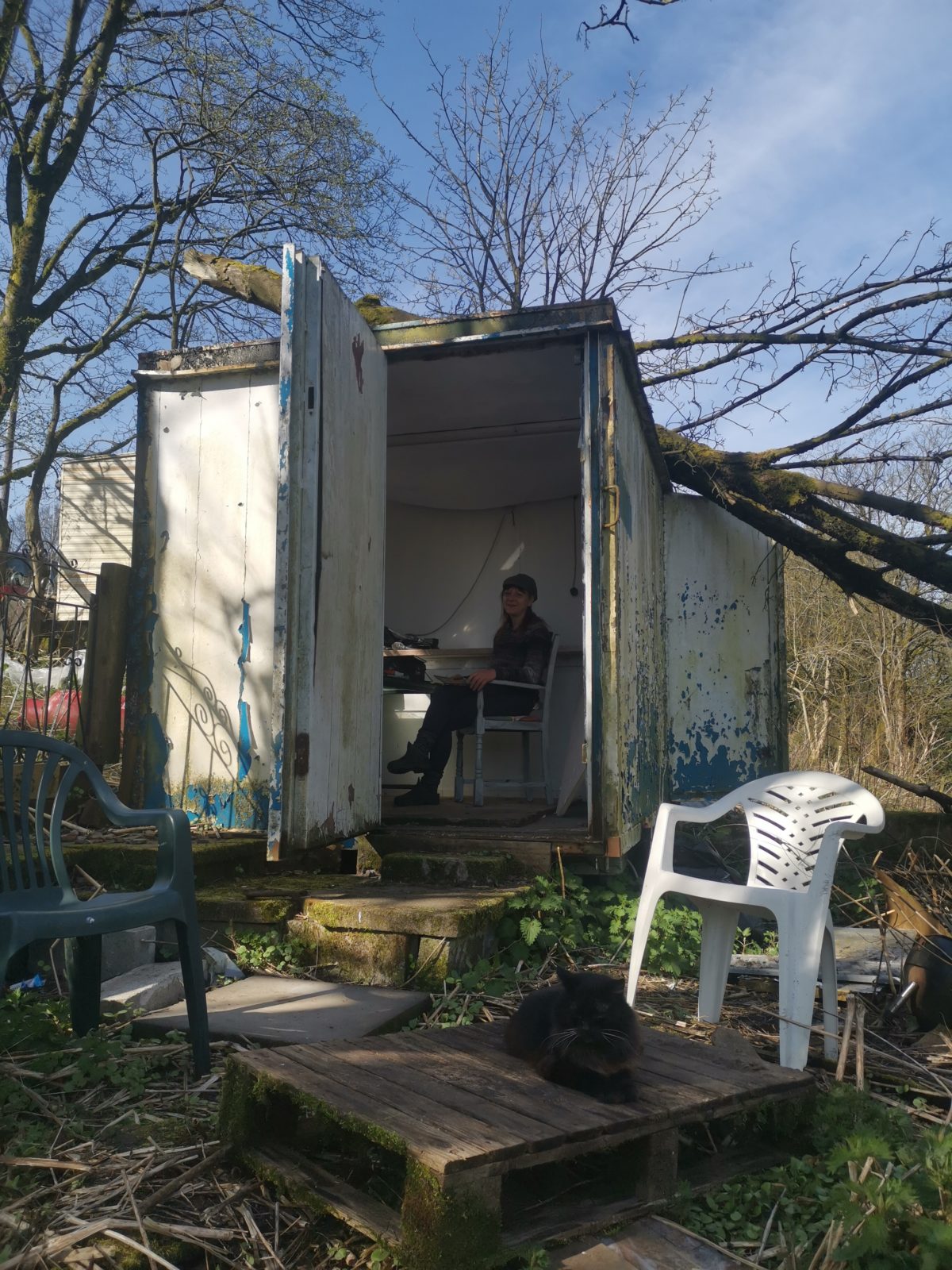MA Dissertation: Fine Art
2019-20
School of Fine Art, History of Art & Cultural Studies
University of Leeds
Word Count: 8422
(excluding notes, bibliography and appendices)
Introduction
[I]t matters what ideas we use to think other ideas.
– Marilyn Strathern, Reproducing the future, p10
Surely, to say ‘unprecedented’ in view of the realities of the last centuries is to say something almost unimaginable. How can we think in times of urgencies without the self-indulgent and self-fulfilling myths of the apocalypse, when every fibre of our being is interlaced, even complicit, in the webs of processes that must somehow be engaged and repatterned?
– Haraway, Staying with the Trouble, Making Kin in the Chthulucene, p35
As a voice in this ‘unprecedented’ time, I write from the precariousness of an off-grid life. When the Covid-19 pandemic reached the UK, I made the decision to remove myself from the system. Whilst most people’s only interface with the outside world in lockdown has been through digital experiences, I have been picking nettles, collecting solar rays, and lighting fires to cook and keep warm by. The break from normality became an opportunity to go beyond ‘thinking by’ and actually ‘live by’ some ideas which I have been exploring around sustainable art practices, namely, the philosophy behind permaculture. My physical and practical concerns during this interesting period, and the journey which I have made through living off-grid, are important because they situate the thinking which I set out in this dissertation.
David Holmgren first laid out the permaculture design principles in Permaculture: Principles & Pathways Beyond Sustainability.[1] This text follows the original work Permaculture One,[2] in which the term ‘permaculture’ was first conceived (meaning durable or sustainable culture). Although the principles are most often applied to land cultivation and agriculture, they are also intended as an alternative philosophy for all human culture: social, economic, political and built environments. (See fig. 1.) Indeed, permaculture is now a counter-cultural movement, radical in the truest sense of being far reaching,[3] and is founded on simple ethics that guide effective decision making within alternative communities and lifestyles across the world. It is a form of applied systems-thinking which consciously observes and learns from patterns and cycles within ecology and our own human socio-political and economic structures. It proposes a guide for building genuinely sustainable and resilient systems. My research aim has been to apply these principles as a critical framework for art production by examining several contemporary art practices. In doing so, I have identified a complementary philosophy which I am calling perma-art practice.
The twelve permaculture design principles assume that we are moving towards an inevitable energy descent – based on observations of past, present and projected patterns of ecological systems. This assumption serves as an ontological foundation for the philosophy of permaculture. Its principles are: observe and interact; catch and store energy; obtain a yield; apply self-regulation and accept feedback; use and value renewable resources and services; produce no waste; design from pattern to detail; integrate rather than segregate; use small and slow solutions; use and value diversity; use edges and value the marginal; creatively use and respond to change.
As the critical framework for this research, permaculture philosophy provides ideas and measures against which I examine contemporary artmaking and its position in the Anthropocene. Rather than explaining and interpreting each of the principles in turn, I will instead bring them into the story as it unfolds, mirroring the philosophy’s wholistic approach.
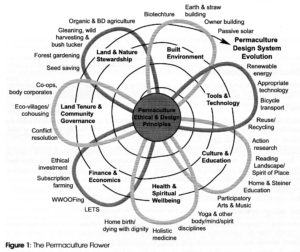
In this dissertation, I examine five contemporary artworks. I contextualise my critique of these examples through reference to a range of eco-critical thinkers, such as Donna J. Haraway and Timothy Morton, whose ideas question wholistic systems, temporality, responsibility, sustainability and symbiotic relationships, as well as the nature of the label ‘Anthropocene’. The artists whose work I have chosen to look at represent a range of approaches, formats and career-levels: from photography and performance to ephemeral and participatory works. These practices don’t necessarily neatly obey or acknowledge all the twelve permaculture principles. There are certainly many other artists who, whether consciously or not, are practicing perma-art but, after having distilled the design principles myself, through ‘living in’ and ‘thinking in’ them, the following artists’ practices are ones which resonate most deeply with me: Mathilde Roussel, John Sabraw, Olivier de Sagazan, Rachel Sussman, and Margaret and Christine Wertheim.
Chapter One
We have trouble visualizing decline as positive, but this simply reflects the dominance of our prior culture of growth. Permaculture is a whole-hearted adaptation to the ecological realities of decline, which are as natural and creative as those of growth.
– David Holmgren, Permaculture Principles and Pathways Beyond Sustainability, p(xxix)
The permaculture philosophy developed over forty years ago,[4] is very much an applied science: it is concerned with improving the long-term material well-being of people and planet through practical solutions. The overarching ethics of permaculture are care for the Earth, care for people and fair share.[5] An unashamedly humancentric philosophy, it assumes that industrialisation, which has come about through the extraction of fossil fuels, represents a time of energy abundance. And that we humans are in an unsustainable growth period which we must find an ethical and graceful way to descend from, before the ultimate feedback systems of mass extinction kick in. In ecological terms, this is known as ’catastrophism’.[6] Unchecked by feedback loops, unregulated growth within natural systems inevitably results in disaster. Permaculture argues that through integrated, wholistic thinking, and through better understanding of systems, we can live sustainably and leave a habitable world for future generations.
Within ecology, abundance and scarcity oscillate between one another. Living off-grid, I observe these natural patterns playing out around me. The waste ground I live on is dominated by pioneer plants,[7] like nettles, ragwort and thistles. Left undisturbed, these will give way to shrubs, small saplings, and eventually become woodland. On days when there is abundant solar energy, I gather as much kindling as possible so that I have dry wood and can avoid using gas for cooking. When there is abundant rainwater, I collect it in butts, buckets – any watertight thing – so I have water to grow food through dry periods. This is not the domestic norm: most people are reliant on large-scale systems with high energy demands and unrestrained consumption. There is misuse of natural capital, and many missed opportunities for harvest and storage of waste resources and renewables. Art making practices are no different. Most production processes are not wholistic. Artists and art organisations don’t always consider abundance, or limitations of energy, resources and place. As makers, we are consumers: we can choose to design sustainably, and furthermore, to consider the long-term impacts of what we do. Permaculture shows that by observing patterns (and by understanding limits within systems), we can reap higher and more sustainable yields.[8] In this dissertation I consider whether perma-art practice can both contribute to a more sustainable future for our species and also be more productive than the high-energy reliant approaches which are currently the norm.
In chapters two and three, I draw from eco-critical theories of Timothy Morton, Donna J. Haraway and others, through which I explore five examples of artmaking. Firstly, I will begin to unwrap some of this eco-thinking.
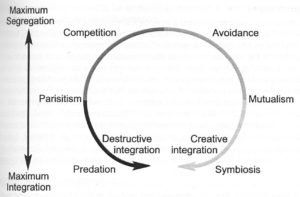
Figure 2: Integrated and segregated relationships in nature
Wholisms
Permaculture is wholistic: ‘thinking globally, acting locally.’[9] It uses examples of cooperation and mutualism from natural systems, and shows that symbiotic relationships are more integrated than competitive relationships, and that systemic thinking is more productive than individualism.[10] (See figs. 2 & 3.)
Timothy Morton takes the idea of wholistic thinking and turns it inside out. He proposes ‘subscendence’:[11] the idea that the whole is not bigger than the sum of its parts (as we are led to believe), and claims that this falsity has led to ‘explosive wholism’.[12] Morton suggests that this idea – that nature is somewhere ‘out there’ and wilderness a pristine thing to be exploited by humans – arose from the creation of walled settlements and beginnings of early human agriculture.
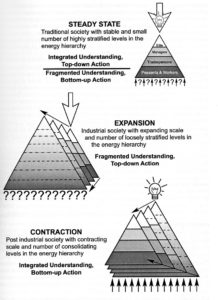
Figure 3: Tropic pyramid model of understanding and action in traditional, industrial and post-industrial societies
Darwinism and post Darwinism have helped spread human exceptionalism and the illusion that evolution always resolves things. In ‘Ape Theatre’,[13] John Berger quotes from Darwin’s The Descent of Man: ‘We must however, acknowledge […] that man with all his noble qualities […] still bears in his bodily frame the indelible stamp of his lowly origin’.[14] This admission to being descended of animal and the use of words such as ‘lowly’ and ‘indelible stamp’ makes this knowledge of origin seem like a stain on humanity. Berger suggests that within this Victorian age, alongside conquests and new discoveries, there sits a fear and a shame.[15]
Morton cites James Lovelock’s Gaia theory[16]: specifically, the idea that components of a whole are dispensable and, if removed, will always be compensated for by the whole – in this case the Earth. He says this ‘new wholism’ is ambiguous and is sustaining illusionary thinking, saying ‘what is being sustained, of course, is the whole neoliberal capitalist economic structure and this isn’t great news for humans, coral, kiwi birds or lichen.’[17] Morton places the concepts of explosive wholism, Gaia theory and God into the same problematic box. The commonality being that they all imply something bigger, more knowing than ourselves. They suppose that nature is ‘out there’, that we are separated from it, that being part of it is shameful and that something else will clean up the mess. But, as Morton points out, when we throw something away, there is no ‘away’[18]: we can’t escape it. This narrative of the ‘fall’ and subsequent shame (that Berger suggests is contained in Darwinism) has become our default mythology: the human conquest of nature. This separation allows us to act against the interests of our own species by continuing behaviour that is creating unprecedented global warming. Morton describes this self-destructive force as ‘agrilogistics’,[19] which he likens to an algorithm or a computer virus that has been running in the brains of humankind since Mesopotamian times: the ‘death drive’.
The death drive is precisely the soothing survival mode of agrilogistics, and it is in charge of the concept of life. The relentless pursuit of relentless life just is death and extermination. The capitalist concept of growth for example is a mode of this pursuit.
– Timothy Morton, Humankind Solidarity with Nonhuman People
Sympoiesis
Morton’s ‘death drive’ also refers to the ‘death culture’.[20] He argues that the agrilogistic program makes us unable to see beyond our default utilitarianism,[21] proposing that we are driven by Kantian laws of non-contradiction,[22] even when these are overridden by the reality of new scientific discovery. In many ways the science has become separated from reality, just as our knowledge of global warming is separated from our actions.
Permaculture offers alternatives to this unsustainable death-growth culture. Its principles advocate better use of resources; self-regulation; smaller and slower production; and integration rather than segregation. There are numerous examples of these principles being practiced around the world that show that this approach to production and decision making is achievable and highly successful. However, permaculture, along with systemic thinking and learning, are considered ‘alternative’ amid mainstream monocultures of industrial and knowledge production. David Holmgren highlights this segregation of functions and of concepts within learning institutions.[23] And Haraway asks ‘[w]hat happens when human exceptionalism and bounded individualism, those old saws of Western philosophy and political economics, become unthinkable in the best sciences, whether natural or social?’[24]
Biology now shows that species boundaries aren’t as distinct as previously thought. Morton points out our bodies contain more DNA from other species than of humans,[25] and he describes these overlapping edges as ‘fuzzy’.[26] We are hosts – or perhaps we are the guests – to many other microbes, viruses and parasites. Our biology, our histories and spaces we cohabit are entangled in various states of becoming-with each other, and of each other. The ‘we’ and ‘our’ now imply multi-species collections of earth sharing beings and things. Haraway suggests using ‘string figures’[27]: ‘relays of passing back and forth’ – giving and holding patterns for each other – with what she calls ‘cultivating response-ability’[28] in a game of cat’s cradle.[29] She describes a ‘risky game of worlding and storying’,[30] insisting that we must continue to tell, and to become part, of these ongoing stories.
Haraway talks about autopoietic versus sympoietic systems. Sympoiesis meaning ‘making-with’:[31] And by contrast, autopoiesis, being self-defined, self-producing and predictable. Haraway writes ‘If it is no longer true that neither biology nor philosophy any longer supports the notion of independent organisms in the environment […] then sympoiesis is the name of the game in spades.’[32] She continues: ‘Bounded (or neoliberal) individualism amended by autopoiesis is not good enough […] it misleads us down deadly paths.’[33] She suggests we ‘compost’ the exceptionalism in order to create ‘the layered, curious practice of becoming-with others for a habitable, flourishing world.’[34] This ‘becoming-with’ is more than ‘thinking-with’, it is biological: we are not separated from nature at all.
Permaculture principle eight,[35] explains how interconnections between things are as important as the things themselves. Applying this deeper understanding of connections subsequently results in stronger and more adaptive systems. This principle stresses that separation-thinking has led to simplifications of functions; the parts of systems are multi-functional and cannot be treated in isolation.
Critters are at stake in each other in every mixing and turning of terran compost pile. We are compost, not posthuman; we inhabit the humus-ities, not the humanities […] Critters-human and not-become-with each other, compose and decompose each other, in every scale and register of time and stuff in sympoietic tangling, in ecological evolutionary developmental earthly worlding and unworlding.
-Donna J. Haraway, Staying with the Trouble, Making Kin in the Chthulucene, p97.
Haraway’s game of ‘string figures’, and of cultivating ‘response-ability’ are echoed by post-humanist Rosi Braidotti’s thinking on living alongside our fellow critters and ‘co-learners’.[36] Braidotti is particularly concerned with what she calls ‘biopower’[37] the politics of death. She asks: ‘who gets to decide who lives and who dies’ and ‘who gets to call this the Anthropocene?‘[38] She suggests the label ‘Anthropocene’ is privileged: a symptom of human-centric obsessions with ‘end of the world’ scenarios, and that these apocalyptic narratives are predominantly driven by patriarchal, White, western thinking. Braidotti, Harraway and Morton all talk about coexistence with other species. Braidotti says ‘we-are-in-this-together-but- we are not one and the same.’[39] Morton writes about ‘solidarity’ between things, species, objects; Haraway is ‘making kin’ with ‘companion species’.[40] Haraway also explores the reciprocators in the dominant hero stories.[41] In her work, she cites numerous examples of species now on the brink of extinction, as well as indigenous peoples who have been removed from land as a result of land grabs and exploitative action.
Permaculture draws on examples of indigenous production. It recognises the strength of spiritualism and tradition within communities, the subtle complexities of undisturbed societies and their connections to stable eco-systems.[42] Much of permaculture ethos involves re-visiting examples of pre-industrial, polyculture-based agriculture. This isn’t harkening back to an idealised golden age, but an examination of balanced and diverse systems of production, that have proven more stable, sustainable and secure than the production systems which dominate at this precarious time in history. Holmgren says that to understand diversity we need to ‘see it in dynamic balance and complementary tension, in all systems, at all levels’.[43]
The idea of activism being a passive process is becoming increasingly popular: a retiring from consumerism by removing oneself from the political and economic system. I have personal experience of this and consider my decision to live off-grid, as both a political action and a ‘sympoietic becoming-with’ – an act of solidarity with my fellow critters. Holmgren summarises this ‘slow is sane’[44] idea in principle nine:
When the norm is itself one of continuous and radical change and the new idea relates to durability, permanence, persistence and sustainability, we have a contradiction in terms and ways of being. The conservative is the radical, and the radical advocates a new conservatism. [45]
– Holmgren, Permaculture Principles & Pathways, p200
Anthropocene
The belief that the end of the world is about to happen right now, unless we do something about it, is prevalent within environmentalism. Haraway writes: ‘These times called the Anthropocene are times of multispecies, including human, urgency.’[46] But Morton says this thinking is paradoxically one of the inhibitors stopping our engagement with ecological existence. He tells us there is no ‘away’ (we are stuck to the Anthropocene whether we like it or not), and that ‘[t]he end of the world has already occurred’.[47]
For Morton, the end of the world correlates with the Anthropocene, global warming and the subsequent climate crisis. He describes these huge concepts as ‘hyperobjects’.[48] These are things and systems that are ‘unthinkable’ to us; beyond any time and space scale relative to humans. They are so massive, and so close, that we’re unable to see them wholly. The biosphere, global warming and the solar system are all hyperobjects. We can interface their parts – see the data – but we can never get the whole picture.[49] For example, we experience weather conditions and are aware of global warming, but can’t see the whole of global warming as the object it is. Morton describes hyperobjects as having their own twisting and looping time, which is why he says that the end of the world has already happened. The temporality of global warming is playing out beyond our ability to know it fully. He explains that it is the ‘strangeness’ of the hyperobject that makes it possible for him to turn the key in his car ignition, despite knowing this action contributes to carbon emissions and subsequently, global warming.[50]
The term Anthropocene is problematic. Created by White Western humans to describe a geo-phenomenon that is largely created by White Western colonial activity on earth, it lumps together the whole human race. Furthermore, post-humanist thinking says the Anthropocene is a blatant example of speciesism as it assumes humans are special in having created it. For Morton the Anthropocene is a manifestation of agrilogistics. Haraway ‘re-worlds’[51] a new term: ‘Chthulucene’,[52] which emerges from her ‘tentacular’ practices:[53]
The unfinished Chthulucene must collect up the trash of the Anthropocene, the exterminism of the Capitalocene, and chipping and shredding and layering like a mad gardener, make a much hotter compost pile for still possible pasts, presents, and futures.
– Donna J. Haraway, Staying with the Trouble, Making Kin in the Chthulucene, p57
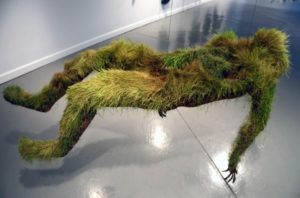
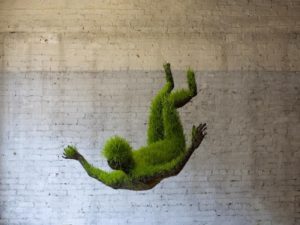
Figure 4: Mathilde Roussel, Lives of Grass Figure 5: Mathilde Roussel, Lives of Grass
Chapter Two:
In these next chapters I examine examples of contemporary art production within the framework of permaculture design principles, offering speculative and comparative analyses rather than exhaustive art historical ones. I begin with Mathilde Roussel’s Lives of Grass sculptures, John Sabraw’s Toxic project and Olivier de Sagazan’s Transfiguration performances.
Roussel’s work is concerned with transformations of body forms: shedding of skin, cycles of growth and deterioration. Lives of Grass (see figs. 4 & 5) is a series of human forms seeded with wheat grass. The sculptures appear to float, unattached to earth or sky, whilst over time the grass sprouts, flourishes and dies. Roussel approaches the human form as container – a grow bag – through which biological processes pass through. She is interested in consumption and human food production.[54] I interpret Lives of Grass as a human attempt to control a monoculture: the confinement of natural growth into a forced form and the sculpting of agriculture to fit ourselves – quite literally. It is a practice of agrilogistic art which is (hanging), disconnected from its system. I want to ask where is the voice of the grass, or indeed the voices of the ‘other’ species, which, by implication are not there (or are spectrally there)? And yet, these grass forms are poignant, fragile, poetic, ephemeral, and they resonate with me materially. The sculptures allow us to observe species in isolation (both humanity and grass) – the reductionist gardener and the segregated monoculture.
David Holmgren talks about the complexities of diversity, pointing out that widespread monoculture causes vulnerability to pests and disease.[55] This has led to an overuse of chemicals and the problems of damaged soil and biodiversity loss. Lives of Grass show human figures in precarious postures, as though we (humans) are in balance, or falling out of balance. Holmgren also talks about broadening our understanding of what is functional and productive, instead of dispensing with everything which is not immediately useful.[56] In ecology, biodiversity is measured by the number of different species within systems. A highly biodiverse system is more stable and productive in the long term because there is more flexibility. However, permaculture suggests that it is numbers of functional connections between species, rather than numbers of species, which makes systems stable.[57]
On the surface, Roussel’s sculpture is an example of environmental art but this is not to say this is perma-art practice: the work is not an integrated system. Principle four explains how natural systems use mechanisms to regulate themselves between abundance and scarcity[58]. These ‘feedbacks’ help in controlling excessive growth and inappropriate behavior. Lives of Grass has no integrated feedbacks: no grazing animal in the gallery keeping the grass down and fertilizing the soil for example! The regulation of light and water is controlled for a short time by the artist but ultimately not sustainable.
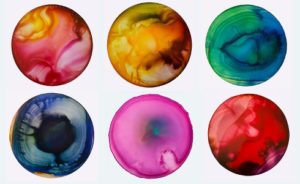
Figure 6: John Sabraw, Chrome series
John Sabraw’s Toxic is an ongoing work that collects iron mining pollution from streams in South East Ohio, turning it into artist pigments. The pigment is used to create Sabraw’s Chroma paintings. (See fig. 6 above.) It is also sold to enable the clean-up of polluted water systems to continue. The artist collaborates closely with scientists, engineers and other artists and his practice provides numerous links to permaculture thinking. This is the ‘art-science worlding’ which Haraway is referring to when she writes about ‘sympoietic practices for living on a damaged planet’.[59] The Toxic project is clearly an example of perma-art practice.
Sabraw follows principle two, which refers to ‘rebuilding natural capital’.[60] He collects the orange sludge (which also happens to be killing the biodiversity of the local environment) and using natural chemical processes to extract the iron, returns clean water into the streams. Sabraw’s project also follows principle three.[61] By observing, interacting with, and integrating what is already there, Sabraw reaps a high-quality product – a paint pigment. Toxic follows principle five[62], six,[63] and eight[64] in that the project is making use of abundance. It is catching, storing and recycling energy (resources) to obtain a yield in a closed loop system: a non-dependent ‘sustainability’ which permaculture advocates[65] – rather than short term political thinking.
There are also the paintings. Sabraw’s Chrome series express a bio-fragility: his process a balancing act, an exploration of micro/macro subject matter, idiosyncratic connections and accidents. Sabraw loads the perfectly leveled metallic surfaces with oil-based pigment until they are so finely balanced as to be perilous.[66]
The third artist in this comparative analysis is Olivier de Sagazan whose performance work emerged through reflective practice – a search for a truer, more primordial identity.[67] In the work Transfiguration[68] (see fig. 7), the artist begins by removing his suit – the identity of a faceless bureaucrat. The performance powerfully explores what is under the surface of a face. Sargazan re-skins himself in clay over and over, painting eyes, mouth, fixing hair onto each configuration, and using voice to express internal transformations. With every recreation of himself, the imagery becomes more animal – more ‘other’.
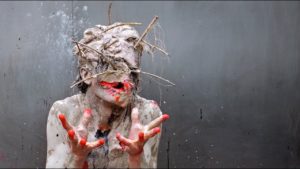
Figure 7: Olivier de Sagazen, Transfiguration
Sagazan’s work links to principles eleven[69] and twelve[70] that talk about entropy being a constant source of change[71]; through learning to see change as an organic process, we can create more resilient systems. Paradoxically it is flexibility that makes natural systems more durable. And it is the responsive, unpredictable quality of Sagazan’s work that makes it powerful. In principle eleven, Holmgren talks about interfaces where things overlap: edges and marginals being most productive. (See fig. 8.) Haraway also talks about the edges and cracks where the endangered and the indigenous still find refuge.[72] In natural systems, areas such as coasts, wetlands, and land between woodland and pasture, are more biodiverse than the obvious bioregions[73]. This is the case with micro-scale edges too: it’s the overlaps between bodies of plants, animals, cells, living soil etc., where action takes place.[74] In bioscience, the exploration of marginal space and of symbiotic relationships between things has led to the redefining of species boundaries. Permaculture argues that our attempts to either ‘fix’ systems, set false parameters or to control nature, are at the root of the environmental crisis we face.
Sagazan’s performance is fluid; it taps into a deep sense of symbiotic life. The artist listens to the exchanges within, intuitively expressing, rather than trying to control his identity. He is becoming-with-clay-audience-voice, rather than imprinting a defined shape of himself on the surface of things. This self-contained, integrated awareness, with its flexible sympoietic approach is an example of perma-art practice.
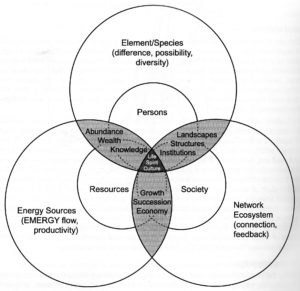
Figure 8: Conceptual musing on self-organising systems
All three artists are observing humanity through the physical use of earth, clay or pigment. In principle one, Holmgren suggests ‘The Problem is the Solution’.[75] This idea proposes that, rather than removing or ignoring a problem (whether weeds, pests, or prevailing conditions preventing progress), it is more productive to use and benefit from it. For example, the stinging nettles which I live among could be regarded as a problem. However, they perform an important function in reclaiming and fertilizing poor soil on which very little else grows. Rather than removing them, I benefit from their work (of drawing minerals out of the soil) by collecting their leaves and seeds (which are highly nutritious). The nettles return nutrients each autumn, helping to accumulate humus which, in turn, gradually provides a habitable soil for more stable plants and species. In permaculture, and in ecology generally, this is ‘succession’[76]: when disturbed systems move towards stability and back to disturbance again.
Roussel’s Lives of Grass floats – disconnected – whilst Sabraw’s Chrome paintings have evolved from a ‘problem’. Roussel works with earth to demonstrate the cycles of change, birth and decay but this is an unsustainable model of succession. Her observation of fragility and human isolation, in a controlled falling, reminds us of reductionist thinking where species and ideas are kept artificially separated – where lawns are kept free from weeds. Roussel’s work is like a piece within one of Morton’s hyperobjects. We see a part, but the whole picture (biodiversity destruction caused by agriculture) is too big to comprehend. Besides, we are stuck within it. As Morton explains (via Kantian philosophy), there is a huge gap between the thing and the data.[77]
Sabraw’s Toxic observes and interacts with human production: exponential growth, mechanization, and agriculture in the Anthropocene. It is ‘Staying with the Trouble.’[78] Like Sagazan, he is responding to internal dialogue, reconnecting with ‘fuzzy’[79] boundaries and multi-functions of things. Sagazan’s observation of humanity is also interactive. The artist liberates himself from separationist thinking, rules of non-contradiction and from the agrilogistic program. The pre-Mesopotamian inside takes over his body. In an interview Sagazan says; ‘the environment always surpasses us’ and ‘the face conceals the inner being’.[80] This is like Morton’s ‘strange stranger’.[81]
Permaculture warns against human attempts to control natural patterns without fully understanding the interdependence of components.[82] As constructors, designers and makers, we often remove materials and resources from complex and carefully evolved systems, using them to perform singular functions, before discarding them again to create waste. Permaculture shows that when complex relationships and functions of things are considered in-situ, and we integrate ourselves, we are likely to reap higher yields in the long run. These case studies show the importance of understanding functions and relationships, and how, as art practitioners, we can use this knowledge to develop more sustainable practices.

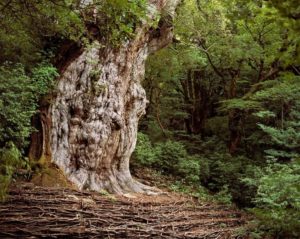
Figure 9 & 10: Rachel Sussman, Oldest Living things in the World
Chapter Three:
I will continue with the comparative analysis of art making practice, against the framework of permaculture design principles, using two more case studies: Margaret and Christine Wertheim’s Crochet Coral Reef project and Rachel Sussman’s Oldest Living Things in the World.
Rachel Sussman works closely with biologists and earth scientists. Oldest Living Things in the World is a photographic series, a collection of living organisms – all more than 2,000 years old. (See figs. 9 &10.) This work, ten years in the making, has been a process of research taking Sussman around the world. The artist collected many stories along the way, getting to know places and subjects in each location. Many of these subjects are in remote or hard to access places, and many are in risky or threatened situations. Hans Ulrich Obrist,[83] says of Sussman: ‘The Oldest Living Things is a category that is defined by curiosity, humane character, a fascination with deep time, and the courage of an explorer.’ Sussman describes her medium as ‘the space time continuum.’ She says: ‘As an artist I aim to connect personal time to cosmic time, as a means to activate long term thinking.’ [84] She points out that humans can’t comprehend time-scales outside of their own life-spans, making long-term thinking around conservation difficult: ‘I approach my subjects as individuals of whom I’m making portraits in order to facilitate an anthropomorphic connection to a deep timescale otherwise too physiologically challenging for our brain to internalize.’[85]
Sussman takes time to understand and ‘read’ her subjects and their complex connections to ecosystems, landscape and temporal space. Her interaction is minimal, recording the lives of her subjects through the distance of a camera. She describes this process as ‘temporal layering’[86] – capturing images of beings which are tens of thousands of years old, in one sixtieth of a second, through human eyes.
When talking about recent work, Sussman describes how the physical discomfort of her process, against the immensity of the subject, gives a sense of her perspective ‘stretching out’.[87] This awareness of deep time and self-limitation is akin to ideas set out in principle nine.[88] Here, David Holmgren talks about transitions between human-scale and industrial-scale production and falsifies the assumption that nature is like a vacuum which quickly colonizes when there is a gap.[89] This is a reflection our own behavior – our unrestrained urge to fill, occupy and consume. In principle four he confirms that successful species have internal regulation constraining excessive growth. Despite our inability to sustain growth beyond human-scale, or to comprehend a being which is older than our great-grandmother, our focus on biggest, deepest, oldest etc. seems hard wired into our thinking. Holmgren describes this as ‘After the Big Fish are Gone’.[90] He explains that our focus is on the biggest fish when there are plenty to catch, and when stocks decline the smaller fish become more interesting, but we don’t have hooks, tackle and machinery needed to catch the smaller fish. As resources become limited, our high dependency, high energy consumerism becomes more inefficient, and scaling-down requires more resources. Permaculture thinking likens this scaling-down to mountain climbing – descent being the most difficult and dangerous part.[91]
Although ephemeral in process, Sussman’s work is about eternity. Her Oldest Living Things are remnants of pre-anthropocenic ages, beyond Morton’s agrilogistic time. Somehow these ‘big fish’ have slipped through the net and their ages are beyond our thinking. They range from a 5,500-year-old Antarctic moss to an 80,000-year-old clonal colony of quaking aspen. The observation of lifespans, scales of individuals within landscapes, and Sussman’s emphasis on the value of diversity, follow perma-art practice. Since this work was undertaken, some of Sussman’s subjects have died (including the 3,000-year-old underground forest in Pretoria). Sadly, this is a consequence of increased human activity.
The Wertheim’s are also science-art collaborators. They founded the Institute for Figuring, an organisation ‘devoted to the aesthetic and poetic dimensions of mathematics and science’.[92] The Crochet Coral Reef was a project that came out of this collaboration. (See figs. 11 & 12.)
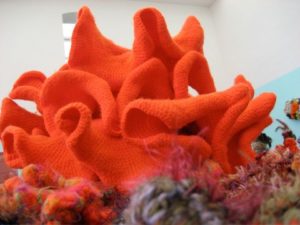
Figure 11: Institute for Figuring, Crochet Coral Reef
As science historian and writer, Margaret Wertheim emphasizes the importance of feminine craft in maths, citing mathematician Daina Taimina, who first used the technique of crochet to work out a model of hyperbolic space.[93] Haraway writes about the work, and of the coral bleaching emergency: ‘Bathed in hot and acid oceans that are becoming more acidic and hotter by the decade, coral holobiomes everywhere are threatened.’[94] The Crochet Coral Reef was begun as an experiment in modelling hyperbolic geometry, and as a response to the bleaching of coral caused by global warming.
The crochet work is varied, surprising, and beautiful. It has been exhibited worldwide, gathering more contributions from crafters at each exposure and has evolved to include ‘toxic reefs’ (see fig.10), made from waste plastic and ocean debris. The project allows participants to become collaborators, and many of these collaborators have strong feelings about coral decline. Haraway writes: ‘Crocheting with this trash feels to me like the looping of love and rage’.[95] The Wertheim’s work seeks out mutualism, symbiotic relationships and collaborative re-worlding. This is Haraway’s ‘arts for living on a damaged planet’.[96]
The involutionary momentum of the crochet coral reef powers the sympoietic knotting of mathematics, marine biology, environmental activism, ecological consciousness raising, women’s handicrafts, fiber arts, museum display, and community art practices.
– Donna J. Haraway, Staying with the Trouble, P78
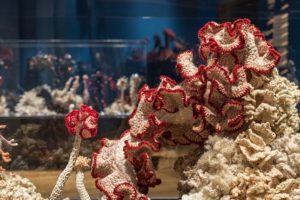
Figure 12: Institute for Figuring, Crochet Coral Reef
Margaret Wertheim describes her frustration with the reductionist cultures within physics and maths; the lack of cross-pollination between practitioners and across disciplines.[97] In response she runs ‘Play Tanks’[98] where plastic play can be used to think ideas. Emphasis on embodied knowledge – the importance of observation, connection with, and experience of the natural – is also at the heart of permaculture philosophy.
The Crochet Coral Reef project provides collaborators with a formula: a crochet code which the sisters have developed. Many adaptions and mutations of crochet are returned but a basic code runs through all the work. Christine Wertheim curates the divergent forms into reefs for exhibitions. Similarly, Holmgren tells us: ‘Complex systems that work tend to evolve from simple ones that work.’[99] The starting point is the maths of coral structures, and the crochet code is much like an algorithm. If Morton’s theory is right and we are indeed running an agrologistic program[100]– a virus which gives us the illusion of separation – then perhaps we need more crochet worlding projects which knot us together.
The Crochet Coral Reef and Oldest Living Things in the World both demonstrate a deep reading of systems, an interaction without physical disturbance. In the Crochet Coral Reef’s case this is ‘intimacy without proximity’,[101] as Haraway describes it. Both are concerned with conservation. Sussman focusing on individual beings, and the Wertheim’s on whole bio-systems. The Crochet Coral Reef raises awareness of environmental issues by involving people in the knotting. Sussman, by presenting inconceivably old organisms, allows glimpses beyond our temporality – our human exceptionalism – towards a more sympoietic ecological awareness.
Conclusion:
These times […] of great mass death and extinction; of onrushing disasters, whose unpredictable specificities are foolishly taken as unknowability itself; of refusing to be present in and to onrushing catastrophe in time; of unprecedented looking away.
– Haraway, Donna J. Staying with the Trouble, p35
It would be easy to remind people of the consequences of our ‘unprecedented looking away’, by listing terrifying facts around global warming, bio-diversity destruction or human exploitations. Whilst it’s important to tell these stories in order to re-world new ones, as discussed, having data doesn’t mean we know the object. We are currently unable to see beyond the hyperobjects that we are stuck to – perhaps we never will. This doesn’t mean they aren’t real or that our actions make no difference. The functions and complexities of things, and the relationships between them, are critical. These ‘string figures’ make a difference, and our part in processes must make a difference too.
Morton likens ecological awareness to noir fiction: ‘We […] Mesopotamians are the narrators of our destiny. Ecological awareness is that moment at which these narrators find out that they are the tragic criminal.’[102] In order for an art practice to make a difference – or rather stop contributing to the disaster – it needs to become ecologically aware: it needs to break the agrilogistic code. Whether this is through embodied knowledge – science-art worlding – like the Crochet Coral Reef or through thinking in solidarity, like Oldest Living Things, the permaculture-style gardening and composting is urgently needed. This wholistic thinking and mutualism must also become responsible: we need conscious re-worlding in recognition that we – the makers, consumers and terraformers – are part of the problem and therefore part of the solution.
The perma-art practice I am proposing (and have been exploring) observes cycles, systems and patterns with an awareness of the connections, functions and impacts of its practice. It employs sensitive interactions and integrated approaches to materials, resources and spaces. It makes use of, and stores, materials where they are or when they’re available, and makes waste, or ‘the problem’, work in sustainable closed-loop projects. It values long term benefits and quality of process, against quantity of material, resources and outcomes. It looks at patterns of change, makes use of dynamics where systems overlap, and cultivates diversity and complexity. It is adaptable, flexible – often collaborative across knowledge, techniques, and species – and its concepts are durable. Perma-art practice is both ‘shimmering’ (like Morton’s ‘Spectral Real’[103]) and ‘Response-able’ (like Haraway’s future of living and dying on a flourishing, habitable world).
List of Illustrations
Fig. 1 ‘Permaculture Flower’, David Holmgren, Permaculture: Principles & Pathways Beyond Sustainability, 2002, pxx.
Fig. 2 ‘Integrated and segregated relationships in nature’ David Holmgren, Permaculture: Principles & Pathways Beyond Sustainability, 2002, p159.
Fig. 3 ‘Tropic pyramid model of understanding and action in traditional, industrial and post-industrial societies’, David Holmgren, Permaculture: Principles & Pathways Beyond Sustainability, 2002, p81.
Fig. 4 Mathilde Roussel, Lives of Grass, 2010-12, First exhibited FIAF Crossing the Line Festival, 170x150x45cm.
Fig. 5 Mathilde Roussel, Lives of Grass, 2010-12, First exhibited FIAF Crossing the Line Festival, 170x150x45cm.
Fig. 6 John Sabraw, Chrome series, 2017-19, Pigment on Aluminum, 48×48 inches.
Fig. 7 Olivier de Sagazen, Transfiguration, First performed 1998 gallery Marie Vitoux, (Paris), Duration 50 mins.
Fig. 8 ‘Conceptual musing on self-organising systems’, David Holmgren, Permaculture: Principles & Pathways Beyond Sustainability, 2002, Edge as a Systemic Property, p226.
Fig. 9 Rachel Sussman, Oldest Living things in the World, Llareta (up to 3,000 years old; Atacama Desert, Chile) 2004-14.
Fig. 10 Rachel Sussman, Oldest Living things in the World, Jōmon Sugi, Japanese Cedar (2,180-7,000 years old; Yakushima, Japan) 2004-14.
Fig. 11 Institute for Figuring, Crochet Coral Reef, Chicago Cultural Center, 2007.
Fig. 12 Institute for Figuring, Crochet Coral Reef, The Bleached Reef, Cooper-Hewitt National Design Museum, 2010–11.
Bibliography
Barad, Karen, Meeting the Universe Halfway: Quantum Physics and the Entanglement of Matter and Meaning (Durham, NC: Duke University Press, 2007)
Barrett, Estelle and Barbara Bolt, ed., Carnal Knowledge Towards a ‘New Materialism’ through the Arts (London: I.B. Tauris & Co., 2013)
Bataille, George, Visons of Excess, Selected writings 1927-1939, 3rd edition, trans by Stoekl, Allan (University of Minnesota, 1989)
Bennett, Jane, Vibrant Matter, a Political Ecology of Things (London and Durham: Duke University Press, 2010)
Berger, John, Why Look at Animals? (London: Penguin Books, 2009)
Bock, Andrew, ‘Wertheim twins take their crocheted global warning to Venice Biennale’,
The Sydney Morning Herald, May 10, 2019 https://www.smh.com.au/entertainment/art-and-design/wertheim-twins-take-their-crocheted-global-warning-to-venice-biennale-20190508-p51l5b.html [accessed 13 July 2020]
Bolt, Barbara, Art Beyond Representation, The Performative Power of the Image (London, New York: I.B. Tauris Co Ltd., 2004)
Braidotti, Rosa, Aspirations of a Post Humanist, lecture for Yale University Tanner Lectures of Human Values, Utrecht University, 2 March 2017. 1.40 hours, posted 3 March 2020 [accessed 5 May 2020]
Braidotti, Rosa, Post Human Knowledge (Medford, MA and Cambridge, UK: Polity Press, 2019)
Braidotti, Rosa, The Post Human (Malden, MA and Cambridge, UK: Polity Press, 2013)
Braidotti, Rosa, Necropolitics and Ways of Dying. Lecture for Sonic Acts Festival, 2019, ‘Hereafter’, 22 Feb 2019, Amsterdam https://www.youtube.com/watch?v=UnFbKv_WFN0 [accessed 7 May 2020]
Coole, Diana and Samantha Frost, eds., New Materialisms, Ontology, Agency, and Politics (Durham & London: Duke University Press, 2010)
‘Crochet Coral Reef’ http://crochetcoralreef.org/ [accessed 8 June 2020]
‘Crochet Coral Reef’, article for antennae, The journal of Nature in Visual Culture, issue 47, p166-p183 https://static1.squarespace.com/static/58ca6591e4fcb5995e65f7f9/t/5d9ff408109cb03426ff4808/1570763788143/ANTENNAE+ISSUE+47_MWsolo+copy.pdf [accessed 19 June 2020]
Davis, Heather and Etienne Turpin, eds., Art in the Anthropocene, Encounters Among Aesthetics, Politics, Environments and Epistemologies (London: Open Humanities Press, 2015)
Dempster, M. Beth, ‘A Self-Organising Systems Perspective on Planning for Sustainability’, MA thesis, Environmental Studies, University of Waterloo, 1998
http://citeseerx.ist.psu.edu/viewdoc/download?doi=10.1.1.180.6090&rep=rep1&type=pdf [accessed 2 July 2020]
Fisher, Mark, Capitalist Realism: Is There No Alternative? (Zero Books, 2009)
Fritsch, Matthias, Philippe Lynes, and David Wood, eds., Eco-Deconstruction, Derrida and Environmental Philosophy (New York: Fordham University Press, 2018)
Grosz, Elizabeth, Incorporeal, Ontology, Ethics, and Limits of Materialism, paperback edition (New York: Columbia University Press, 2018)
Haraway, Donna. J, Staying with the Trouble, Making Kin in the Chthulucene (Durham, London: Duke University Press, 2016)
Haraway, Donna. J, When Species Meet (Minneapolis, London: University of Minnesota Press, 2008)
Holmgren, David, Permaculture Principles & Pathways Beyond Sustainability, 1st UK edition (London: Permanent Publications, 2011)
Holmgren, David, Introduction to Permaculture, Pamphlet 1, Permaculture Design Course Series (New Hampshire, USA: Yankee Permaculture,1981)
Jones, Lee, Art & Science Journal, ‘Mathilde Roussel’, Art & Science Journal was a student-run publication that ran from 2011-14 and now exists as an online archive https://www.artandsciencejournal.com/post/21081970283/mathilde-roussel-in-this-series-life-of-grass [accessed 20 July 2020]
Lent, Jeremy, The Patterning Instinct, A Cultural History of Humanity’s Search for Meaning (Prometheus Books, 2017)
Lovelock, James E., and Lynn Margulis, ‘Atmospheric Homeostasis by and for the Biosphere: The Gaia Hypothesis’ Tellus, Series A (Stockholm: International Meteorological Institute) 26, nos. 1-2 (1 Feb, 1974) https://www.tandfonline.com/doi/abs/10.3402/tellusa.v26i1-2.9731 [accessed 5 July 2020]
MacFarlane, Robert Underland, A deep Time Journey (London: Penguin Books Ltd, 2019)
Mollison, Bill, ‘Interview with Bill Mollison’, with Scott Vlaun, transcript (July 25, 2001) https://seedzen.files.wordpress.com/2012/03/bill-mollison-seeds-of-change-interview.pdf
Mollison, Bill and David Holmgren, Perma-culture one, A Perennial Agriculture for Human Settlements, 2nd Australian edition (Bristol, UK: Taragi Publications, 1990)
Moore, Jason W., Capitalism in the Web of Life, Ecology and Accumulation of Capital (London: Verso, 2015)
Morton, Timothy, Dark Ecology, For a Logic of Future Coexistence (New York: Columbia University Press, 2016)
Morton, Timothy, Humankind, Solidarity with Non-human People, narrated by Liam Gerrad, 8.22 hours unabridged (Tantor Audio, released 27 March 2018)
Morton, Timothy, Hyperobjects, Philosophy and Ecology after the End of the world, narrated by Dave Wright, 8.52 hours unabridged (University Press Audio, released 22 October 2014)
Nietzsche, Fredrich, On the Genealogy of Morals A Polemic, trans. by Douglas Smith (Oxford and New York: Oxford University Press, 2008)
Roussel, Mathilde, ‘Lives of Grass’, anti-utopias https://anti-utopias.com/art/mathilde-roussel-lives-of-grass/ [accessed 20 June 2020]
Roussel, Mathilde, ‘Lives of Grass’, Feel Desain, issue 989, 16 April 2012, https://www.feeldesain.com/lifes-of-grass-mathilde-roussel.html [accessed 13 July]
Roussel, Mathilde, Pioneer Works, Visual Arts Residency https://pioneerworks.org/residency/mathilde-roussel/ [accessed 9 July 2020]
Sabraw, John https://www.johnsabraw.com/ [accessed 22 May 2020]
Sabraw, John, ‘Toxic Art’ https://www.johnsabraw.com/video/ [accessed 4 June 2020]
Sabraw, John, ‘Meet the Artist’, interview for WOUB Digital, 6.18 minutes, posted Jan 2016 https://www.youtube.com/watch?v=B1_aBoClDts [accessed 8 July 2020]
Sagazan, Olivier de, ‘Le Nef des Fous’, documentary by Dark Horse Films, 8.22 minutes, posted 4 May 2015 https://www.youtube.com/watch?v=WgS2fma_I7Y [accessed 6 July 2020]
Sagazan, Olivier de, ‘Portrait Olivier de Sargazan’, Dukascopy TV interview, 42.30 minutes https://olivierdesagazan.com/ [accessed 6 July 2020]
Sagazan, Olivier de, ‘Transfiguration’ https://olivierdesagazan.com/performancetransfiguration [accessed April 2020]
Sussman, Rachel http://www.rachelsussman.com/ [accessed 9 July]
Sussman, Rachel, ‘An Ephemeral look at Eternity’ TED video, 6 minutes, posted 5 April 2017 https://youtu.be/zojnBFu6dm0 [accessed 6 July]
Sussman, Rachel, ‘The Oldest Living Things’ TED video, 13.53 minutes, posted July 2010 https://www.ted.com/talks/rachel_sussman_the_world_s_oldest_living_things?language=ca [accessed 20 June 2020]
Wertheim, Margaret, ‘The Beautiful Math of Coral’ TED video, 15.16 minutes, posted Feb 2009 https://www.ted.com/talks/margaret_wertheim_the_beautiful_math_of_coral [accessed 6 July 2020]
Wertheim, Margaret, ‘Crochet Coral Reef’ https://www.margaretwertheim.com/crochet-coral-reef [accessed 20 June 2020]
Wohlleben, Peter, The Hidden Life of Trees, What They Feel, How They Communicate, trans. by Jane Billinghurst (Vancouver and Berkley: Greystone Books Ltd., 2016)
Notes
[1] David Holmgren’s Permaculture: Principles & Pathways Beyond Sustainability was first published in 2002. This dissertation draws references from the first UK edition (2011). The text has been since updated (2015).
[2] Permaculture One, was co–written in 1976 by David Holmgren and Bill Mollison.
[3] The word radical is derived from the Latin radicalis, ‘of or having roots’, meaning going to the origin of something.
[4] Permaculture was first developed by David Holmgren and Bill Mollison in Australia as a method of small-scale food cultivation.
[5] The ethical and moral principles of Permaculture are laid out in David Holmgren’s Permaculture: Principles & Pathways Beyond Sustainability, p1-10.
[6] ‘Catastrophism’ theory suggests a natural pulsating between large scale natural forces (like floods and fires), and stability: a ‘crashing and rebuilding’. David Holmgren, Permaculture: Principles & Pathways Beyond Sustainability, p248-51.
[7] Pioneer plants and ‘succession’ theory; David Holmgren, Permaculture: Principles & Pathways Beyond Sustainability p245 and p255.
[8] David Holmgren, Permaculture: Principles & Pathways Beyond Sustainability, p55.
[9] David Holmgren talks about systems of governance, suggesting that what is needed is more ‘bottom-up (participatory) action’, and more ‘thinking globally, acting locally’, Permaculture: Principles & Pathways Beyond Sustainability, p15-16. Also, ‘Top-down Thinking, Bottom-up Action, p79-82.
[10] Types of ecological relationships are discussed in principle eight of David Holmgren’s Permaculture: Principles & Pathways Beyond Sustainability, p155-58. These relationships are: predatory, parasitic, competitive, avoidance, mutualistic, symbiotic, and polar opposites or emergent unions.
[11] ‘Subscendence’: Morton points out that a thing, a being or a whole, contains infinite components, each containing infinite components and so on. Morton, Timothy, Humankind Solidarity with Nonhuman People, narrated by Liam Gerrard, unabridged, 8.22 hours, (Tantor Audio, released 27 March 2018).
[12] ‘Explosive Wholism’ is explained fully: Morton, Timothy, Hyperobjects, Philosophy and Ecology after the End of the world, narrated by Dave Wright, 8.52 hours unabridged, (University Press Audio, released 22 October 2014).
[13] Berger, John, Why Look at Animals?, (London: Penguin Books ltd, 2009), p22-23.
[14] Darwin, Charles, The Descent of Man and Selection in Relation to Sex, first published in 1871, (New York: Appleton and Co., 1883), pp. 7, 609, 612-614, 618-619.
[15] In his essay ‘Ape Theatre’ Berger makes this point further: ‘The liberty of the newly open-up space-time of the universe brought with it a feeling of insignificance and pudeur from which the best that could be redeemed was the virtue of intellectual courage, the virtue of being unflinching. And courageous the thinkers of that time were!’ John Berger, ‘Ape Theatre’, in Why Look at Animals?, p43.
[16] Morton, Timothy, Dark Ecology, For a Logic of Future Coexistence, (New York: Columbia University Press, 2016), p7 and p22. Also: Morton, Timothy, Hyperobjects, Philosophy and Ecology after the End of the world, narrated by Dave Wright, 8.52 hours unabridged, (University Press Audio, released 22 October 2014).
[17] Morton, Timothy, Humankind, Solidarity with Non-human People, narrated by Liam Gerrad, 8.22 hours unabridged, (Tantor Audio, released 27 March, 2018).
[18] Morton says; ‘there is no away’, Dark Ecology, p78.
[19] Morton’s ‘agrilogistics’ theory is explained in full in his Dark Ecology, p42-46.
[20] Death Culture is described by feminist philosopher, Mary Daly in Gyn/Ecology: The Metaethics of Radical Feminism (Boston: Beacon, 1990), p40-46. Others have made comment on death culture: our use of fossilised (dead) plants and animals to make materials, like plastics, that we then wear as protection against nature.
[21] Utilitarian default: Morton suggests that we are governed by the axiom that ‘more existing is better than any quality of existing’ and that ‘Human existing is always better than any quality of existing’. Dark Ecology, p51.
[22] Morton writes about Kantian correlationism and laws of non-contradiction in Dark Ecologies, p16-18 and p92-95.
[23] David Holmgren writes: ‘Almost all formal scientific education is based on bottom-up reductionist thinking […] it is the integration and cross-fertilisation of concepts and ideas that is now providing the most fruitful results for dealing with the systemic problems of the environmental crisis. Much of the integrated thinking is happening outside educational institutions.’ Permaculture Principles and Pathways Beyond Sustainability, p20.
[24] Donna J Haraway, Staying with the Trouble Making Kin in the Chthulucene, p57.
[25] Morton, Dark Ecology, p20 and p71.
[26] ‘fuzzy temporalities’, Morton, Dark Ecology, p71 and p77.
[27] Haraway, Staying with the Trouble, p9-29.
[28] Haraway, Staying with the Trouble, p34.
[29] Haraway, Staying with the Trouble, p14.
[30] Haraway, Staying with the Trouble, p13.
[31] Haraway borrows the term ‘sympoiesis’ from M. Beth Dempster who uses it to describe collectively producing systems that have no temporal or spatial boundaries in her thesis ‘A Self-Organising Systems Perspective on Planning for Sustainability’, MA thesis, Environmental Studies, University of Waterloo, 1998.
[32] Haraway, Staying with the Trouble, p33.
[33] Haraway, Staying with the Trouble, p33.
[34] Haraway, Staying with the Trouble, p34.
[35] Principle Eight, (Integrate rather than segregate), Holmgren, Permaculture Principles & Pathways, p1.
[36] Braidotti, Rosa, ’Aspirations of a Post Humanist’, lecture for Yale University Tanner Lectures of Human Values, (2 March 2017), 1.40 hours, (Utrecht University, Posted 3 March 2020).
[37] Braidotti, Rosa, ‘The Politics of “Life Itself” and New Ways of Dying’, New Materialisms; Ontology, Agency, and Politics, Diana Coole and Samantha Frost eds, (Durham and London: Duke University Press, 2010), p204.
[38] Braidotti, Rosa, ‘Necropolitics and Ways of Dying’, lecture for Sonic Acts Festival, 2019, Hereafter, (22 Feb 2019), Amsterdam.
[39] Braidotti, Rosa, ’Aspirations of a Post Humanist’, lecture for Yale University Tanner Lectures of Human Values, (2 March 2017), 1.40 hours, (Utrecht University, Posted 3 March 2020).
[40] Haraway, Staying with the Trouble, p115. Haraway continues; ‘the more one looks, the more the name of the game of living and dying on earth is a convoluted multispecies affair that goes by the name of symbiosis, the yoking of companion species, at table together.’ p124. The derivation of companion being one who you share bread with from Latin ‘panis’ meaning bread.
[41] Haraway, Staying with the Trouble, p39-40.
[42] Holmgren, Permaculture Principles & Pathways, p1.
[43] Holmgren, Permaculture Principles & Pathways, p204.
[44] Holmgren, Permaculture Principles & Pathways, p83.
[45] The ‘Paradox of the Radical and the Conservative’, Holmgren, Permaculture Principles & Pathways, p200.
[46] Haraway, Staying with the Trouble, p34.
[47] Morton says: ‘The end of the world has already occurred. We can be uncannily precise about the date on which the world ended […] It was April 1784 when James Watt patented the steam engine, an act that commenced the depositing of carbon in earth’s crust, namely the inception of humanity as a geo-physical force on a planetary scale.’ Hyperobjects Philosophy and Ecology after the End of the World, narrated by Dave Wright, 8.42 hours, (University Press Audiobooks, released 22 Oct 2014).
[48] Hyperobjects: (from the same Greek derivative as hypocrite, ‘hypokrites’, meaning actor). Morton explains that hyperobjects fold in non-linear loops and twists. He follows with the idea that time is a series of catastrophes[48], (twists or downward turns in Greek) – one of which is the end of the world. These catastrophes are ongoing, loops within loops. Morton, Dark Ecology, p11-12. In Dark Ecology, Morton explains; ‘it might be better to see history as a nested series of catastrophes that are still playing out rather than as a sequence of events based on a conception of time as a succession of atomic instants.’ p69. He goes on to use the example of the ‘Oxygen Catastrophe’; Oxygen was a catastrophe for the bacteria that excreted it about 3 billion years ago. p70-71.
[49] Morton, Hyperobjects, narrated by Dave Wright, (University Press Audiobooks).
[50] Morton, Dark Ecology, p8.
[51] Haraway ‘re-worlds’ our familiar stories of the ‘beautiful hero’ The begetter of weapons, the hunter, the tool carrying ‘sky gods’ are instead replaced by ‘the real actors’ the ambiguous bags, holes, conduits, networks and containers, in Staying with the Trouble, p39-40.
[52] Haraway, Staying with the Trouble, p2 and p55.
[53] ‘Tentacular Thinking’, Tentacular, from the latin tentaculum, meaning ‘feeler’, and tentare ‘to feel’. Haraway, Staying with the Trouble, Chapter 2, p30-p57.
[54] Roussel, Mathilde, ‘Lives of Grass’, Feel Desain, Issue 989, 16 April 2012
https://www.feeldesain.com/lifes-of-grass-mathilde-roussel.html
[55] Holmgren, Permaculture Principles & Pathways, p203.
[56] Holmgren, Permaculture Principles & Pathways, p204.
[57] Holmgren, Permaculture Principles & Pathways, p213.
[58] Holmgren, Permaculture Principles & Pathways, p73.
[59] Haraway, Staying with the Trouble, p67 and p67-71.
[60] Holmgren, Permaculture Principles & Pathways, p27-30 and p36.
[61] Principle Three, (Obtain a Yield), Holmgren, Permaculture Principles & Pathways, p55-69.
[62] Principle Five, (Use and Value Renewable Resources and Services), Holmgren, Permaculture Principles & Pathways, p93-108.
[63] Principle Six, (Produce no Waste), Holmgren, Permaculture Principles & Pathways, p111-24.
[64] Principle Eight, (Integrate Rather the Segregate), Holmgren, Permaculture Principles & Pathways, p155-77.
[65] Holmgren talks about ‘Self-Reliance as a Political Action’; Permaculture Principles & Pathways, p87.
[66] Sabraw describes the painting process in: ‘Toxic Art’ https://www.johnsabraw.com/video/
[67] Sagazan describes his starting point and his performance process in an interview: ‘Portrait Olivier de Sargazan’, Dukascopy TV, 42.30 minutes https://olivierdesagazan.com/
[68] Sagazan, Olivier de, ‘Transfiguration’ https://olivierdesagazan.com/performancetransfiguration First performed in 1999 and has since been performed over three hundred times in many different countries.
[69] Principle Eleven, (Use Edges and Value the Marginal), Holmgren, Permaculture Principles & Pathways, p223-37.
[70] Principle Twelve, (Creatively Use and Respond to Change), Holmgren, Permaculture Principles & Pathways, p239-71.
[71] Holmgren, Permaculture Principles & Pathways, p242.
[72] Haraway, Staying with the Trouble, p71.
[73] Holmgren, Permaculture Principles & Pathways, p224-27.
[74] Holmgren describes micro-scale edges, the overlaps between bodies of plants, animals, cells, living soil etc., where exchange of gas, fluids and microbes happens. Holmgren, Permaculture Principles & Pathways, p225.
[75] ‘The Problem is the Solution’, Holmgren, Permaculture Principles & Pathways, p18.
[76] Holmgren, Permaculture Principles & Pathways, p245.
[77] Morton, Dark Ecology, p93.
[78] Haraway reminds us at the beginning of her book ‘Staying with the Trouble’, that the word trouble means ‘to stir up’, ‘to make cloudy’, ‘to disturb’, and that we all must become ‘capable’ with each other in these disturbed, troubled times. p1.
[79] Morton, Dark Ecology, p77.
[80] ‘the environment always surpasses us’ and ‘the face conceals the inner being’, Sagazan, ‘Portrait Olivier de Sargazan’, Dukascopy TV https://olivierdesagazan.com/
[81] Morton talks about the truth of an object being like a ‘strange stranger’, and about the ‘weird’ and ‘looped’ nature of things, saying we can never reach the truth: it disappears before we get there. Morton, Timothy, Humankind, Solidarity with Non-human People, audio narrated by Liam Gerrad (Tantor Audiobook, released 27 March 2018). Also: Morton, Dark Ecology, p92.
[82] (Integrate Rather than Segregate), Holmgren, Permaculture Principles & Pathways, p155.
[83] Hans Ulrich Obrist, artistic director of Serpentine Galleries, 2019.
[84] Sussman, Rachel, ‘An Ephemeral look at Eternity’, TED video, 6 minutes, Posted 5 April 2017, https://youtu.be/zojnBFu6dm0
[85] ‘I approach my subjects as individuals of whom I’m making portraits in order to facilitate an anthropomorphic connection to a deep timescale otherwise too physiologically challenging for our brain to internalize.’ Sussman, Rachel. http://www.rachelsussman.com/
[86] Sussman, Rachel, ‘An Ephemeral look at Eternity’, TED video, 6 minutes, posted 5 April 2017. https://youtu.be/zojnBFu6dm0
[87] ‘stretching out’, Sussman, Rachel, ‘An Ephemeral look at Eternity’, TED video, 6 minutes, posted 5 April 2017. https://youtu.be/zojnBFu6dm0
[88] Principle Nine (Use Slow and Small Solutions), Holmgren, Permaculture Principles & Pathways, p182-200.
[89] Holmgren, Permaculture Principles & Pathways, p187.
[90] ‘After the Big Fish are Gone’, Holmgren, Permaculture Principles & Pathways, p186.
[91] ‘From the Mountain Peak’, Holmgren, Permaculture Principles & Pathways, pxxx.
[92] Institute for Figuring, founded in 2001. Crochet Coral Reef, conceived in 2005, ‘Crochet Coral Reef’. http://crochetcoralreef.org/
[93] In 1997, mathematician Daina Taimina first used the technique of crochet to work out a model of hyperbolic space. (Previously only Euclidian and spherical space had been modelled practically.)
[94] Haraway, Staying with the Trouble, p72.
[95] Haraway, Staying with the Trouble, p79.
[96] Haraway, Staying with the Trouble, p67.
[97] Wertheim, Margaret, ‘The Beautiful Math of Coral’, TED video, 15.16 minutes, posted Feb 2009.
[98] Play tanks in place of think tanks, ‘Crochet Coral Reef’ http://crochetcoralreef.org/
[99] David Holmgren, Permaculture Principles and Pathways Beyond Sustainability, p127.
[100] Morton looks at patterns through Marxist ideas of production and considers the difference between acting and behaving when Marx suggests that humans are conscious builders (architects), and that bees are just following algorithms, Morton’s point is that there’s no proof that humans aren’t following algorithms as well: Morton, Dark Ecology, p31. Also: Morton, Timothy, Humankind, Solidarity with Non-human People, audio narrated by Liam Gerrad (Tantor Audiobook, released 27 March 2018).
[101] Haraway, Staying with the Trouble, p79.
[102] Morton, Dark Ecology, p9.
[103] Morton talks about the ‘spectral real’ and its ‘shimmering’ as being there but not being able to fully see it, in his book Hyperobjects, Philosophy and Ecology after the End of the world, narrated by Dave Wright (University Press Audio, released 22 October 2014).
[104] Holmgren, Permaculture Principles & Pathways, p87.
[105] Holmgren, Permaculture Principles & Pathways, p240.
[106] Holmgren, Permaculture Principles & Pathways, p239.

